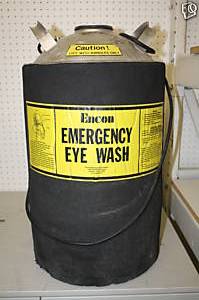ScubaSteve
Well-Known Member
- Joined
- May 21, 2007
- Messages
- 3,673
- Reaction score
- 91
On another note, I started some apfelwein over this 4th of July weekend and left town. I thought it was gonna be super simple because the Montrachet yeast doesn't foam. I noticed a small trickle going into my blowoff, and as the corny was really full, I thought it was just the gas diptube being submerged a bit.
I came back after 4 days, and my brew room was covered with a sticky sweet residue. The apfelwein smell was overpowering! All the boxes on the floor had waterlines halfway up the side, as if a flood had happened! I lifted the keg, and it was LIGHT AS A FEATHER. Turns out I hooked the gas up to the liquid post (the fact I had to push hard should've been my first warning) and the keg dispensed itself all over the floor.
But the math didn't add up....the blowoff container was 3/4 full, the floor had a thin film of applejuice, where were the other 4 gallons???
It all went down the floor vent....looking up at the ceiling downstairs right below the room, there are now large but faint wet spots....at least the drywall isn't soggy (phew!).
Thank god it's summer and the A/C will dry it out in a hurry!
Please learn from my mistake and double check that everything is hooked up right! I may even pull the diptube just to be sure next time.......
I came back after 4 days, and my brew room was covered with a sticky sweet residue. The apfelwein smell was overpowering! All the boxes on the floor had waterlines halfway up the side, as if a flood had happened! I lifted the keg, and it was LIGHT AS A FEATHER. Turns out I hooked the gas up to the liquid post (the fact I had to push hard should've been my first warning) and the keg dispensed itself all over the floor.
But the math didn't add up....the blowoff container was 3/4 full, the floor had a thin film of applejuice, where were the other 4 gallons???
It all went down the floor vent....looking up at the ceiling downstairs right below the room, there are now large but faint wet spots....at least the drywall isn't soggy (phew!).
Thank god it's summer and the A/C will dry it out in a hurry!
Please learn from my mistake and double check that everything is hooked up right! I may even pull the diptube just to be sure next time.......
































![Craft A Brew - Safale BE-256 Yeast - Fermentis - Belgian Ale Dry Yeast - For Belgian & Strong Ales - Ingredients for Home Brewing - Beer Making Supplies - [3 Pack]](https://m.media-amazon.com/images/I/51bcKEwQmWL._SL500_.jpg)











